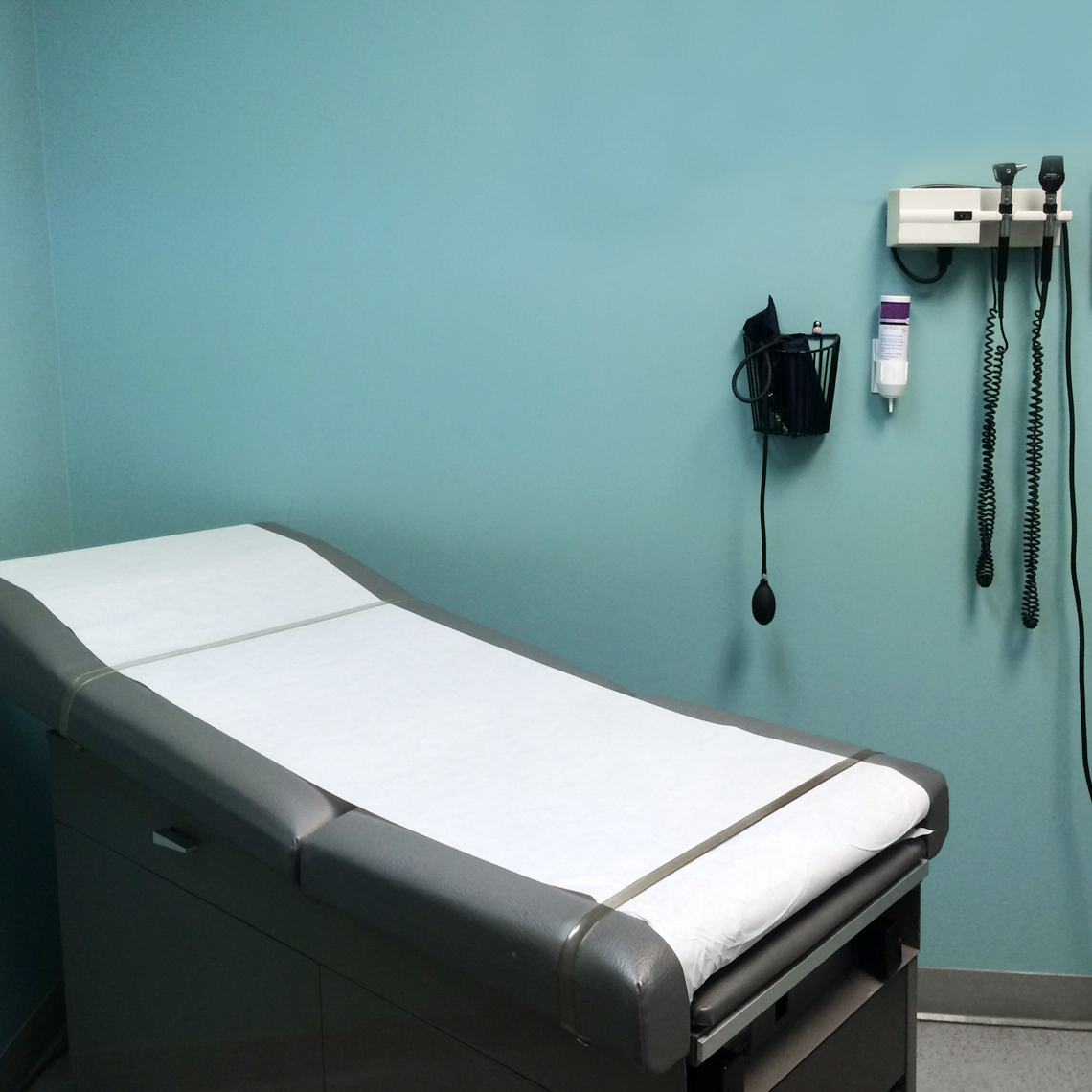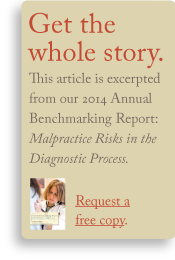Article
CRICO’s 12-Step Diagnostic Process of Care Framework

Analyzing the Diagnostic Process
The CBS taxonomy enables data analyses along the process of care that help identify where breakdowns most commonly occur. Each of the 12 steps described below presents focal points for more detailed analysis and opportunities for provider training and systems improvements.

INITIAL DIAGNOSTIC ASSESSMENT:
58% of cases involve Assessment failures
Covers the patient’s presentation with a complaint, through the physician’s assessment, differential diagnosis, and test orders. Factors that trigger malpractice allegations are primarily related to voids in the physician’s evaluation of the patient’s history and cognitive processing related to presentation, differential diagnosis, and test ordering.
- Problem Noted, Care Sought – 1% of cases
Issues: Access, scheduling, or waiting issues impede the patient from raising a relevant health problem, or delays him or her from seeking care for a recognized problem. - History and Physical Conducted – 7% of cases
Issues: The patient’s (personal and family) history is not fully recorded or updated; the physical examination is absent or inadequate. - Patient Assessed and Symptoms Evaluated – 26% of cases
Issues: The patient’s complaints or symptoms are not thoroughly addressed. - Differential Diagnosis Established – 34% of cases
Issues: A narrow diagnostic focus, failure to establish a differential diagnosis, or reliance on a chronic condition or previous diagnosis. - Diagnostic Test(s) Ordered – 31% of cases
Issues: The ordering of appropriate tests/imagings/labs is impeded by an incomplete or biased assessment.

TESTING AND RESULTS PROCESSING:
29% of cases involve testing failure
From the scheduling, performance, and interpretation of diagnostic tests, through the management of the test results. The factors that trigger malpractice allegations are primarily related to breakdowns in clinical systems for test result management, the cognitive skills related to interpretation, and communication of results to the ordering physicians.
- Tests Performed – 3% of cases
Issues: Ordered test/imaging is not performed, performed incorrectly, or specimen is mislabeled or mishandled. - Test Interpreted – 23% of cases
Issues: Report of findings are determined to be incomplete or inaccurate; abnormal findings not ruled out. - Test Results Transmitted to/Received by Ordering Physician – 5% of cases
Issues: Receipt/review of test result by ordering physician is not completed, or is significantly delayed.

FOLLOW UP AND COORDINATION:
46% of cases involve Follow-Up failures
Encompasses decisions made and actions taken after assessment and testing, including consultations and communication. The factors driving malpractice allegations are primarily related to failure to involve specialty consultation and breakdowns in communication among caregivers and between caregivers and the patient.
- Physician Follows Up with Patient – 18% of cases
Issues: Findings are not communicated to the patient, follow-up testing is not arranged, or follow up is not documented. - Referrals/Consults – 19% of cases
Issues: Appropriate referrals to specialists (or consults) are not made or adequately managed, or identification of the physician responsible for ongoing care is unclear. - Patient Information Communicated Among Care Team – 12% of cases
Issues: Failure by one or more provider to fully review or share patient information that influences ongoing diagnostic process. - Patient and Providers Establish Follow-up Plan – 15% of cases
Issues: Patient fails to adhere to the follow-up plan, including appointments and treatment regimen.
This page is an excerpt of the full Candello report: Malpractice Risks in the Diagnostic Process.
Diagnostic Process Report Contents
Related Articles
“Are You Safe?” Case Study-based Learning for Multidisciplinary Teams

Legal Report: Curbside Consults in the Digital Age
Documentation Dos and Don’ts


